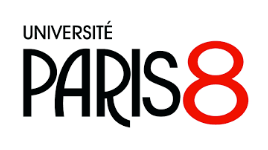12h30
Pouchet salle 124 & zoom
retour Séminaire Syntaxe et Sémantique
Waltraud Paul (Centre de Recherches Linguistiques sur l'Asie Orientale, CRLAO)
How many – if any – serial verb constructions are there in Chinese?
Practically every surface string with more than one verb in Chinese has been considered a serial verb construction (SVC), because in Chinese linguistics the term SVC is typically not used to refer to a unique construction with an associated set of predictable properties, but instead serves as a cover term for a myriad of separate constructions with completely different structures, such as control structures, sentences with postverbal purposive clauses or preverbal adjunct clauses, with sentential subjects etc. (cf. Paul 2008 and references therein). Strangely enough, the so-called directional verb compounds ‘V1displacement V2direction lái (come)/ qù (go)’ (cf. Li & Thompson 1981: 58) have not been termed SVCs. This is probably due to their misanalysis as compounds, i.e. as words, despite the well-known fact that aspect suffixes and objects can occur at different positions “inside” the alleged compound (e.g. bān-chū-lái ), as shown in (1b) – (1c):
(1) a. Tā cóng fángjiān lǐ bān -chū-lái -le [yī bǎ yǐzi].
3sg from room in transport-exit-come -perf 1 cl chair
b. Tā cóng fángjiān lǐ bān -chū -le [yī bǎ yǐzi] lái.
3sg from room in transport-exit-perf 1 cl chair come
c Tā cóng fángjiān lǐ bān -le [yī bǎ yǐzi] chū-lái.
3sg from room in transport-perf 1 cl chair exit-come
‘She brought out a chair from the room.’
In fact, these “compounds” turn out to be genuine SVCs in the strict sense as defined by Collins (1997), representing a single event with one aspect/tense marker and sharing of the internal argument. (For first proposals in this direction, cf. Ernst 1989, Law 1996, Paul 2005, 2008). Time permitting, we challenge the usefulness of [+serializing] as a typological parameter.



